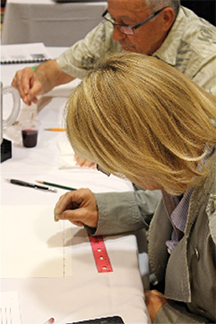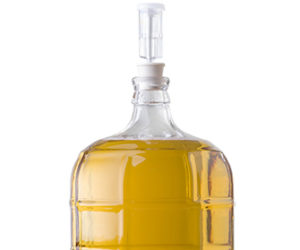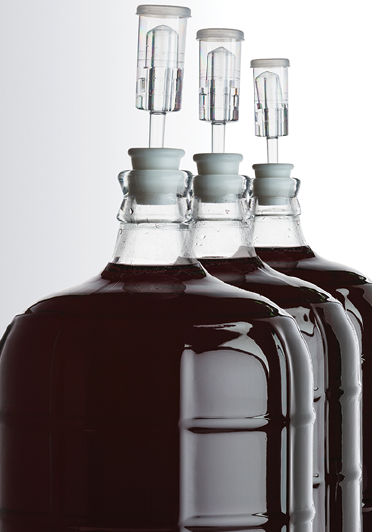
Have you ever been left with a fermenter full of wine, wondering “what the heck went so wrong?” Scratching your head, you go through the steps, re-check the numbers, and you are still left shaking your head. The grapes were seemingly near perfect, everything appeared to go smoothly with fermentation . . . but something obviously did not.
If you’ve been making wine for enough years, you know what I am talking about — stuck fermentation, hydrogen sulfide stink, and fusel alcohols are three such potential culprits. There can often be a lot more than meets the eye when it comes to a successful fermentation. Yeast selection, fermentation temperature, nutrient demands, pH, sulfur management, osmotic stress, and alcohol stress can all play a role in getting the most from your one-celled friends. We all know the mantra “Grapes want to be wine.” Notice, though, that it doesn’t say anything about grapes wanting to be great wine.
We rounded up four wine yeast experts to discuss some of the various factors and finer aspects of what winemakers should be looking for in yeast selection and fermentation protocol. So when you approach your next must, you’ll feel more at ease knowing that what comes out at the end of active fermentation is what you were hoping to achieve.
Meet the Pros
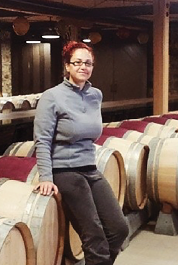
Eleni Kinti comes from Greece and has a Master of Science in Viticulture – Enology from the University of Bordeaux. She has 15 years of experience working in the wine industry in Greece, Italy, France, Spain, and has performed several vintages in the New World in the US, New Zealand, and Canada. The last four years she has worked with the Renaissance Yeast team as Enologist, where she develops wine strains while she studies for her WSET Diploma.

Tamara Logsdon is the Quality Control Lab Coordinator and Brand Manager at Wyeast Laboratories, which provides liquid yeast for fermentations around the world. With a degree in biology and philosophy of science from the University of Puget Sound and having grown up with the family business, she has experience in just about every aspect of the company. She is currently balancing lab research and improving the presence of liquid yeast in the wine and cider industries.

Neva Parker has been with White Labs since 2002. She earned her bachelor’s degree in microbiology from Gonzaga University in Spokane, Washington. Neva manages laboratory operations and has been responsible for researching and developing new products and services, as well as speaking at several workshops and conferences. (including the WineMaker Conference in San Diego, California in 2018). She is a member of the American Society of Brewing Chemists.
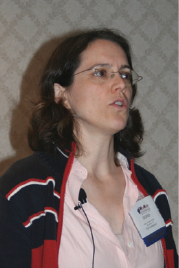
Sigrid Gertsen-Schibbye is the Technical Support and Area Manager in Scandinavia and the UK for Lallemand, Inc. — a manufacturer of a wide variety of winemaking products including dried yeasts, yeast nutrients, bacteria, and enzymes. She has a degree in microbiology from McGill University in Montréal, and started her fermentation career in a quality control lab of Mosti Mondiale, a kit and fresh juice supplier. She then worked at Pelee Island Winery before joining Lallemand in 2001.
What are your recommendations for winemakers selecting a yeast strain for a grape varietal or juice they have not worked with before?
Eleni: As a yeast-producing company we try to write extensive descriptions of the yeast aromatic profile and suggest varietal pairings. Reading the brochure should be a start but you should not be limited to that. Always have in mind the desired final product. Trialing the yeast, playing with different temperatures and yeast nutrition is widely recommended. Worldwide winemaking dictates classic expression for each varietal but there is also a lot of innovation and progress. We encourage winemakers to use our yeast as a tool, not as a recipe ingredient.
Tamara: We recommend taking advantage of any tools that are available from suppliers. We have put a lot of time into our Style-to-Strain guide online, with over 80 varietals and styles represented, so that your new yeast selection will be suitable for your wine and ensure the final outcome will be enjoyable.
Neva: Having analytical information on the juice will be most helpful in selecting the appropriate strain, specifically Brix and acidity. Based on these stats, looking at strains that will ferment well under those conditions will provide successful fermentations.
Sigrid: We would recommend looking at the grape varietal characteristics that one is hoping to emphasize, as well as the must profile to be realistic about the expectations of the yeast being added. A yeast which has been selected from a warm climate, with high pH conditions, may not perform optimally or respond well in low pH, cool fermentation conditions. I would also tend to recommend a slightly more hardy and neutral yeast to start with, until one had a good feel for the grape in question. However, some winemakers have great confidence and experience with a certain yeast, and will be able to trust this yeast in another grape juice, even if it is the first time.
What yeast pitching rate do you recommend for different wine styles and are there situations where you suggest home winemakers deviate from the recommended pitch rates?
Eleni: We recommend a 0.2–0.3 g/L inoculum (of dry yeast). Higher pitching should be applied when Brix is higher, but bearing in mind that higher inoculum also has higher nutrient demands, especially at the time of growth. Compound families (esters, monoterpenes) are significantly affected by inoculum sizes. Correct rehydration of the inoculum is also a step that should be taken very seriously before deciding a pitching modification.
Tamara: We recommend pitching 100 billion cells to inoculate 5–6 gallons (19–23 L) of must. It is important to make sure you are starting with a viable, healthy culture with a sufficient cell count to ensure you start and finish with a healthy fermentation. The better your starting pitch rate, the less chance you’ll need to intervene. Variables in pH, high ABV, or sugars may also affect your pitch rate.
Neva: Generally, inoculating wine with 1 x 106 cells/mL is a good rule of thumb. This provides good fermentation kinetics with the yeast fermentation rate proceeding within 7–8 days for alcoholic fermentation. For wines where more fruity aroma characteristics are desired, it is recommended to inoculate with slightly higher amounts of yeast, up to 1 x 107 cells/mL. This results in production of higher levels of ester compounds, contributing to more fruity aromas.
Sigrid: There is a recommended inoculation rate regardless of the wine style, but the profile of the must will naturally affect this recommendation: Alcohol percent, temperature, desired sugar content such as for dessert wines; these are different reasons we do try to emphasize the need to increase the initial inoculation rate.
What recommendations do you have for hobby winemakers considering co-inoculating their yeast with malolactic bacteria?
Tamara: While the rule of thumb is to wait to inoculate with your ML bacteria until primary fermentation is complete, there is no wrong way to do it as long as you consider the conditions that the bacteria need to thrive for malic-to-lactic acid conversion. This means making sure your must has adequate nutrients, a balanced temperature for both the yeast and bacteria, and giving the yeast fermentation a day or two to get going before adding the bacteria. If you are trying co-inoculation for the first time or with a different wine, it might be worthwhile to split the batch and try both methods to see what works best for your winemaking and taste preferences.
Neva: Co-inoculation has been found to greatly reduce the overall fermentation time for wine while also providing a stable environment, by allowing for malolactic bacteria (MLB) to more effectively out-compete potential spoilage organisms. Nutrient availability is high early in the alcoholic fermentation and there is little to no ethanol stress, so MLB are able to slowly acclimate to the wine environment. This results in high success rate for MLF.
Sigrid: The best thing to do with a co-inoculation is to invest in a way to measure the evolving acid levels. You can have the most glorious co-inoculation completed, but if you are not aware that it is finished and the bacteria continue to metabolize products in the wine, you can deviate from the ultimate goal of a fresh, clean wine with lower acidity. Even a simple paper chromatography can give you an indication if the malic acid is converted 5% or 95%. A co-inoculation can be super-efficient and much quicker than one is used to with a longer, slower sequential inoculation.
Yeast trials can be a great way to learn the impacts of yeast on the finished wine. Do you have any recommendations for folks who may want to try a yeast trial at home?
Tamara: Go for it! One of the most important things to remember is that you should only change one aspect of your fermentation at a time like any good science experiment. Splitting the must and keeping all other parameters identical will give you the best chance for identifying the differences and how they impact your wine. Maybe you’re trying a different strain, maybe fermenting at different temperatures with the same strain — there are many ways to manipulate yeast that will influence your wine. Take notes and keep track of everything you do so you’ll have a good reference to look back on.
Sigrid: Do more yeast trials! If at all possible to bottle off one or two 12-oz. (350-mL) beer bottles before mixing the trials for more efficient storage, one will learn much more from the trial if it can be tasted 3–12 months after the fermentation is finished. If it is not possible, know that blending wines with different yeast will always contribute complexity and depth to the final wine.
What do you recommend for winemakers with limited resources to invest in fermentation temperature control?
Tamara: Find a strain that makes a wine you enjoy when fermented at the temperature you have, rather than expecting the profile of the strain and wine at the ideal (though maybe not attainable) temperature.
Eleni: Taking advantage of the coolest areas in your establishment. Create airflows and when necessary use water to externally cool your ferments. Organic nutrition is also recommended to avoid fermentation spikes.
How do you approach nutrient requirements for various yeast strains?
Eleni: Must analysis for YAN (yeast assimilable nitrogen) calculation is important, when possible. Each yeast strain has different demands and most of the yeast companies will give an approximate amount of the recommended initial YAN level. Monitoring the fermentation closely and adding nutrients when there is a speed decrease but not after the half way point of the fermentation. Actions should be taken in early stages of the fermentation so the first days are most important to be mindful and cautious. I prefer organic nutrition because the fermentation is more linear and the aromas are preserved better.
Tamara: Nutrients are critical for healthy fermentation, but home winemakers don’t have to dive into the intricacies of nutrient composition and extra calculations. Keep your regimen simple by using a balanced, broad-spectrum nutrient. Follow the instructions and let it do the rest of the work. If you use grapes from a local vineyard or winery and want to take your nutrient knowledge to the next level, inquire about how they approach nutrient requirements for that specific region.
Neva: All yeast strains need nutrients, and more so if the grape must is particularly difficult. Specifically, nitrogen sources are critical for yeast in fermentation and in most grapes, there is some level of yeast assimilable nitrogen available. It is important to know what this is for your particular grapes and ensure they are adequate for fermentation. Most reds will require 100 mg/L and whites will require 150 mg/L to promote successful fermentations. If YAN is lower than these levels, commercial nutrients can be added to supplement.
Are there additional considerations when it comes to yeast selection for country fruit wines?
Eleni: In country fruit winemaking the rules are practically the same, apart from different fining agents and enzymatic properties of the strains.
Tamara: Country fruit will have different sugar and acid levels than wine grapes. Consider the alcohol tolerance of different strains, the original Brix of the juice, and the potential alcohol when selecting your yeast. Be ready to balance the wine’s acidity with the residual sugar. Again, using a style-to-strain guide will help take the guesswork out of selecting the right strain.
Sigrid: Most country fruit is less nutritious (from the yeasts’ perspective) compared to grapes or compared to beer fermentations. Micronutrients are key aspects, which we do not know all the answers to in different fruit yet. Therefore, we definitely recommend adding a rehydration nutrient to help protect the yeast from lower pH and little or unbalanced nutrition.
Are you concerned about the speed of fermentation when you’re making wine?
Neva: The speed of fermentation can be important. If a fermentation proceeds too quickly, a winemaker could risk over-production of higher alcohol compounds, which can result in “hot” or solvent characters in the wine. The faster fermentations also increase the temperature of the fermentation, which can lead to off-flavors. A slow fermentation can indicate that there may be an issue with the strain or must environment, and could result in a stuck fermentation, so selecting an appropriate strain for the juice conditions is key.
Sigrid: A slower fermentation is not necessarily a concern as it relates to different sugar ratio in country fruit, and often lower nutrient availability, but helping the yeast to face these conditions is very relevant in the research we are aware of with non-grape fruit. Regardless of the strain being used, a fermentation that is too fast does not allow the yeast to develop interesting aromas and can also lead to a stuck fermentation. Monitoring temperatures and not overloading the yeast with nutrients, but focusing on balanced nutrient approach will always give a better result than aiming for a fast fermentation or stressing the yeast by starving it, in attempt to make it go slower.
How closely do you monitor a wine’s fermentation and at what point may you intervene if it is not going according to plan?
Eleni: The earlier we intervene the less the damage. So daily monitoring is sufficient but with accurate and mindful observations.
Neva: This is something that is critical to high-quality wine fermentations. Monitoring the speed of fermentation daily is helpful during active fermentation (first 72 hours) and will help a winemaker troubleshoot if the fermentation looks to be stuck. Early detection will allow a winemaker more options for addressing the issue than later detection.
What variations to your fermentation procedure might you recommend depending on the style of wine being sought?
Eleni: With regards to yeast I would play with temperature variations, nutrition variations (different amino acids, vitamins, and minerals), acidification for pH adjustment, size of the inoculum, different fining agents and enzymes. It is always surprising how each strain interacts differently with each of these factors. How rich winemaking is with the use of specific commercial strains and the scientific complexity we have in our hands to create the wine we desire.
Sigrid: Trying different yeast, different yeast and bacteria combinations, and different timing of nutrients, even adding inactive yeast to give you more volume in the mouth . . . almost anything will give you a new perspective and insight into the wonderful world of microbiology happening in your wine — which also changes with every harvest.
Do you have any other recommendations to hobby winemakers when it comes to making the most of their fermentations?
Eleni: Follow the manufacturer instructions. Respect the temperature ranges and their nutrient specifications, keep vessels clean, and use a meticulous rehydration program. Monitor temperature, density, and taste your wines daily. Bench trials will guide you. Be creative but also caring.
Tamara: It’s important to broaden your experience with different strains and ingredients once you have your process down. If you’re following a recipe, try a different strain other than what’s listed. If you use wine kits, try swapping a dried yeast packet for a liquid one or do a side-by-side. If there’s a local wine you love, reach out to the winery.
Sigrid: Time, balance, and keep good notes on what you have done. Many questions can be resolved by looking at the data of when things were added (or not) and when things slowed down or stopped.



